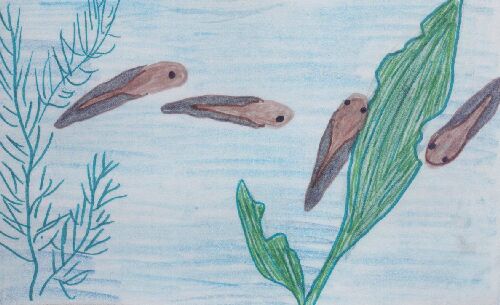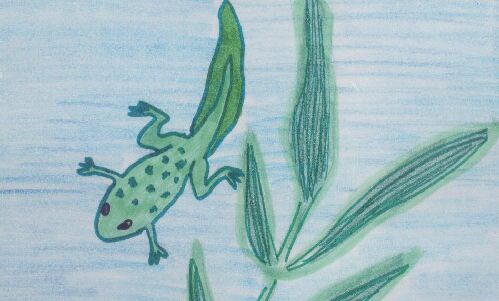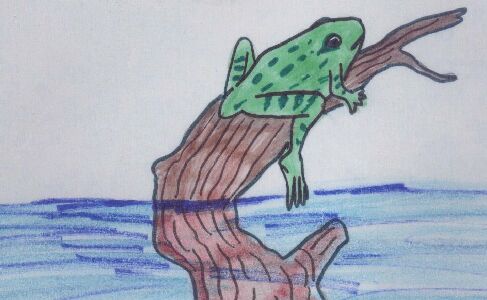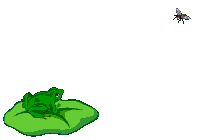

| The female frog lays many eggs in the water. The clumps of eggs are covered with jelly which helps to keep the eggs safe. This floating clump of eggs is called frog spawn. Large clumps may contain thousands of eggs. |

| A tiny animal called a tadpole grows inside the egg. Some eggs hatch in four days and some in twenty days. At first, the tadpoles stick to plants in the water. The tadpole has gills, a mouth and tail. Gills help the little tadpole to breathe. The gills are on the sides of the tadpole's head. The tadpole swims, eats, grows and changes. It eats algae and tiny water plants. Many tadpoles are eaten by fish, birds and other frogs. |

| After about four weeks the gills start to disappear. Tiny "teeth" grow. Now the tadpole can chew on green water plants. |

| Soon the tadpole begins to grow legs. Its hind legs grow first. The hind legs get longer and longer. Then the front legs grow. The lungs get bigger so soon it can use its lungs to breathe air. Its mouth changes too. The tadpole does not eat while its mouth is changing. It uses food which has been stored in its tail. When the tadpole nearly looks like a frog, except for the stumpy tail, it is called a froglet. The tail gets shorter and shorter until at last the tail is gone. |

| After twelve weeks the tadpole looks more like a frog. It uses its feet for swimming. Soon it is able to leave the water and live on land. Many tadpoles change into frogs in a few months. Some tadpoles take two or three years to change. Now the frog cannot swim under water too long and must come up for air. Sometimes the frog rests in the water with only its nose above the water. |

BACK - All About Frogs